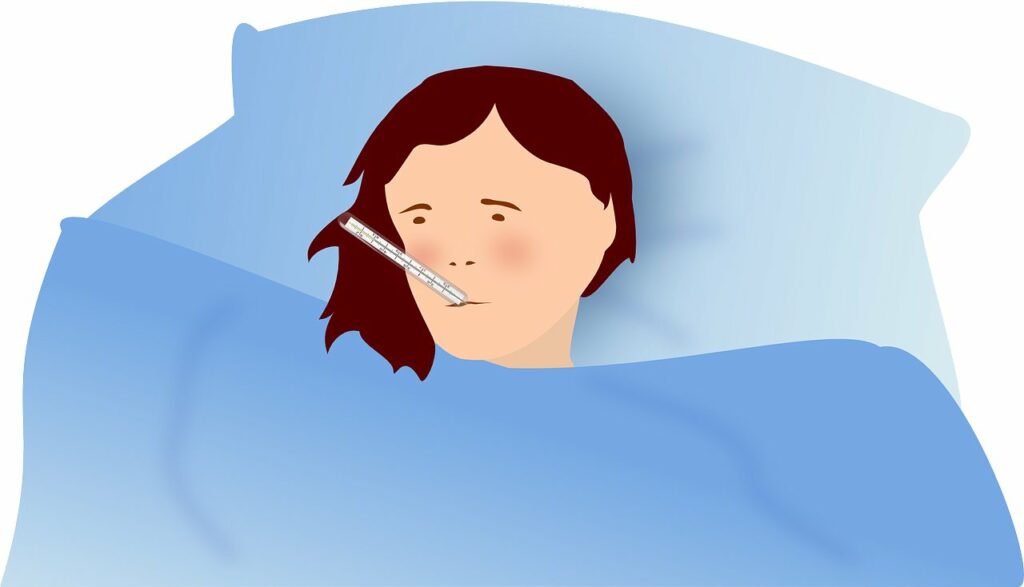Medical waste regulations remain in place year-round, but flu season presents unique challenges due to the increased volume of waste generated, particularly in flu vaccine disposal. This heightened waste production can lead to increased risks of improper disposal, necessitating larger waste containers and more frequent pickups. Additionally, busy healthcare workers may inadvertently place non-medical waste, such as disposable tissues, into biohazard containers, leading to inefficiencies.
Current Flu Trends: A More Severe Season
According to the CDC, the 2024-2025 flu season has seen significantly higher flu activity than previous years. Hospitalization rates have risen to 32.6 per 100,000 population, and flu test positivity rates have climbed to 18.8%, surpassing previous years’ data. These figures highlight the importance of efficient waste disposal and infection control measures during peak flu months.
Flu Vaccine Waste Disposal: What You Need to Know
There is often confusion regarding whether flu-related protective materials require special disposal:
- Face Masks & Gowns: Classified as routine solid waste unless visibly contaminated with blood or bodily fluids.
- Disposable Tissues: Not considered regulated medical waste and can be disposed of in general trash receptacles.
- Gloves Used During Patient Care: Should be treated as medical waste and disposed of in biohazard bags.
Other Common Medical Waste During Flu Season
Flu care generates several additional types of medical waste, requiring proper disposal:
- IV Tubing & Fluids: Used for treating severe flu cases and must be disposed of according to hazardous waste regulations.
- Testing Supplies: Used flu test kits, swabs, and specimen collection materials should be treated as regulated medical waste.
- Antiviral Medication Waste: Expired or unused Tamiflu and similar medications may require hazardous waste disposal, depending on formulation.
- Sanitizing Materials: Disinfectant wipes and cleaning supplies used in flu patient areas may need specialized disposal based on facility protocols.
Best Practices for Medical Waste Disposal in Flu Season
1. Increase the Frequency of Waste Pickup
Flu season results in a higher volume of medical waste, so scheduling more frequent disposal pickups can help prevent overflow and contamination risks.
2. Use Larger Waste Containers
Healthcare facilities should ensure they have adequate sharps containers, biohazard bins, and standard waste receptacles to handle increased waste volume.
3. Place Bins in High-Traffic Areas
To minimize improper disposal, place medical waste bins in easily accessible locations where flu patient care is being administered.
4. Improve Waste Labeling & Signage
Ensure all waste containers are clearly marked and labeled in multiple languages (e.g., English, Spanish, Chinese) to assist diverse healthcare staff in proper disposal practices.
5. Train Staff on Waste Segregation
Given the increase in waste volume, additional training sessions on proper disposal methods can reduce errors and contamination.
6. Adhere to Compliance Guidelines
Despite the rise in flu-related waste, all facilities must continue to follow OSHA, CDC, EPA, and state-specific regulations for medical waste handling and disposal.
Find Out How Much You Can Save Instantly.
Try our on-line savings calculator.
Flu Vaccine Disposal How To
Proper disposal of flu vaccine waste and the waste related to it is essential to maintaining safety, preventing contamination, and ensuring compliance with medical waste regulations. Different components of vaccine administration, from syringes to packaging and vials, require specific handling procedures to minimize risks. Below are key guidelines for safe and compliant disposal of vaccination waste.
- Used syringes must be captured in sharps containers and disposed of as regulated medical waste (RMW).
- Vaccine packaging can be disposed of as regulated medical waste. Please refer to your vaccine manufacturer’s instructions for packaging waste such as trays and boxes.
- Empty vaccine vials should be captured in sharps containers to mitigate potential diversion and illicit intent. Once placed in a sharps container, it should be managed as regulated medical waste.
- Full or partial vials should be managed as regulated medical waste or as non-hazardous pharmaceutical waste once placed in a sharps container.
- Other medical waste, such as gloves, gauze, cotton balls, and bandages, should not be placed in disposable sharps containers. These items can go into the regular trash or, if considered potentially infectious material, be disposed of in RMW containers.
Ensuring Safe & Compliant Medical Waste Disposal During Flu Season
Flu season presents an increased risk of improper medical waste disposal due to heightened patient volumes and waste production. By implementing best practices such as increasing waste pickups, using larger containers, and educating staff on proper disposal techniques, healthcare facilities can ensure compliance and efficiency. Proper disposal of flu vaccine waste and other flu-related medical waste is essential for maintaining a safe environment for both healthcare workers and patients.
For more information on flu vaccine waste disposal and medical waste management solutions, contact us today!



